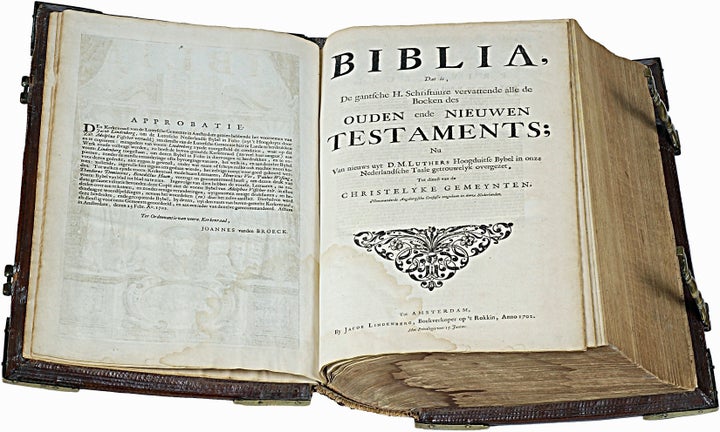
I have seen the same question posed by three very different people in the past few days, so I thought I might use this more public forum to answer it. The most recent catalyst for the question was an NPR piece on the controversy over the historicity of Adam and Eve. In my segment of the program, I compared that controversy about Adam to the Galileo Affair, suggesting that Christians are now facing a challenge like that created by the motion of the earth in the 17th century.
The motion of the earth was threatening in 1633 when Galileo was on trial. The Bible was quite clear that the earth was fixed and said so in so many words: "The earth is fixed and cannot be moved" wrote the Psalmist with unfortunate clarity in chapter 93. And there were theological issues. The earth-centered universe made theological sense. If humanity was the focus of God's creation, then it followed that the earth would be located in a special place. In the worldview of the times, however, the center of the universe was special in that hell was located there. Things improved as one moved out toward the stars, in the general direction of heaven, and away from the earth.
Reluctantly, and with much egg on its face, the Church eventually made peace with Galileo and the motion of the earth. The last holdout was the ultraconservative Missouri Synod of the Lutheran Church, which finally capitulated just over a century ago, almost three centuries after Galileo's infamous trial.
The controversy over Adam and Eve is much the same. There are biblical references to Adam and Eve that, if taken literally, suggest they were real people. But these references are no more compelling than those made by the Psalmist to a fixed earth. And Adam essentially disappears from the Old Testament after his brief cameo in the Garden of Eden. The real issue, however, is theological. St. Paul, in the New Testament, speaks of Christ as a "Second Adam," undoing the damage created by the first Adam. If we don't have Adam to explain where sin came from, then Christianity supposedly collapses. The intertwined biblical and theological problems of the Adam controversy are strikingly analogous to their Galilean predecessors. The Adam issue is more significant, however, since it deals with humanity and connects to Christ.
These questions are complex and beyond what I want to address in this piece. What I do want to address is a much easier question that keeps coming up about biblical interpretation. The biblical references to the fixed earth and the first couple require interpretation. You cannot simply read a book like the Bible -- you have to read it through complex filters to properly understand it. The most obvious such filter is that of language. The story of Adam and Eve originated as a Hebrew oral tradition, which is a long ways from an English prose translation. And there are more complex filters related to culture, author intent, literary form, historical setting, anticipated audience and so on.
Application of these filters leads many readers to conclude that the biblical story of Adam and Eve was never intended to be read as literal history. The world "Adam" for example, is the generic Hebrew word for "man." "Eve" means "living one." The story is about a couple with the improbable names "Man and Living One," who reside in a magical garden and take walks with God in the evening. It is far from obvious that this should be read as literal history.
But how do we decide which parts of the Bible should be read literally? This question is often posed with an "Aha! I have got you" exclamation, as though the inquisitor is certain it cannot be answered. Jerry Coyne, in his endless quest to discredit all things religious, put it like this in a recent blog:
"Sophisticated" theologians who urge a non-literal reading of the Bible always put themselves in a bind. And it is this: if the Bible is not to be read as a literal account of the truth, then how do we know which parts really are true, and which parts are fiction or metaphor? Nobody has ever found a convincing way to winnow the true from the metaphorical, and so it becomes an exercise in cherry-picking.
Less triumphalist versions of this same question were posed to me by a radio listener this morning and a former student yesterday on my Facebook wall. And I think the answer is straightforward, even simple:
The Bible is not a book. It is a library -- dozens of very different books bound together. The assumption that identifying one part as fiction undermines the factual character of another part is ludicrous. It would be like going into an actual physical library and saying "Well, if all these books about Harry Potter are fictional, then how do I know these other books about Abraham Lincoln are factual? How can Lincoln be real if Potter is not?" And then "Aha! I have got you! So much for your library."
Acknowledging that the Bible is a library doesn't do all the hard work for us, of course. But recognizing this at least lets us avoid the so-called slippery slope where a non-literal approach in one place somehow compromises a literal approach in another.